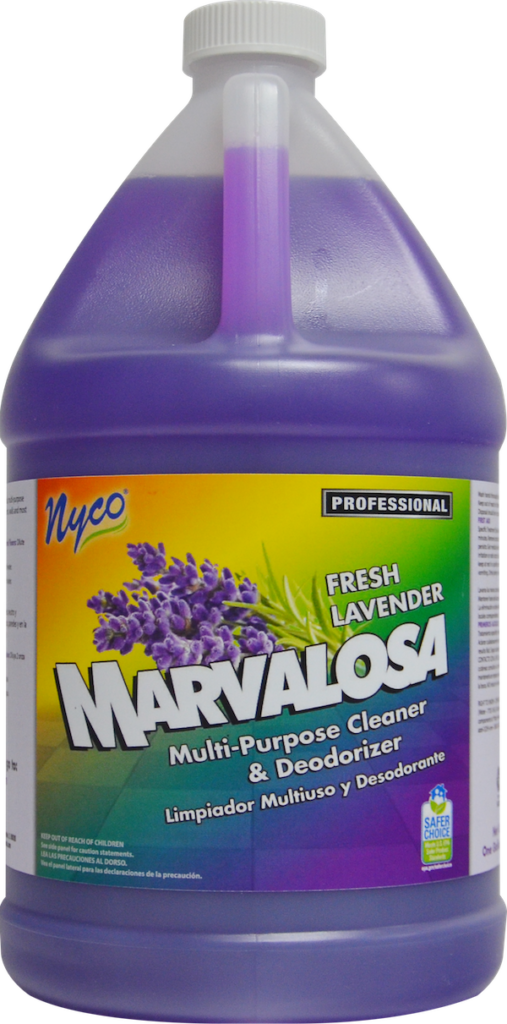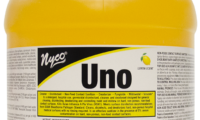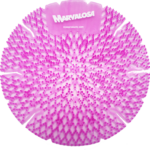
Educational, Odor Control, Restroom Care
Controlling Facility Odors: Is Your Program Up To Sniff?
Ahh the nose… conduit of both delight and disgust. Fresh cut grass, warm chocolate chip cookies and brand new cars are just a few scents we humans can’t seem to get enough of. Yet a whiff of spoiled milk, sweaty gym socks or the spray of a certain white-striped animal can cause us to beat a fast retreat.
It’s no secret that certain smells evoke strong emotional reactions, making us feel relaxed and at ease, or stressed and uncomfortable. Odors also play a part in how customers view a facility, with foul odors giving the impression that an operation is dirty, poorly run, or even unsafe.
Understanding some of the science behind odor control can help you create a solid plan to combat undesirable odors in your facility and ultimately have you enjoying the sweet smell of maintenance success.
Our Complicated Sense of Smell
Our sense of smell, also known as olfaction, is the most complex yet least understood of our five senses. Although we, as humans, don’t have bloodhound levels of scent detection, we can actually distinguish between a trillion different odors (1,000,000,000,000)! — nothing to sneeze at!
Odors are properties of objects perceived by receptors in our nasal passages. Odors, or scents, can refer to pleasant or unpleasant smells. The term “malodor” is used specifically for bad smells. The tolerance threshold for malodors is different for each person, and odors that don’t offend some can be downright sickening to others.
Fight Right: 4 Approaches to Odor Control
Fighting malodors in your facility is an ongoing battle. However, understanding the weapons at your disposal can help in choosing the right products for the job. Odor control methods typically employ one or more of the following approaches:
 Eliminating the source of the odor – This is the most effective method to send many facility odors packing. When you get rid of the bacteria source, you get rid of the odor. You can eliminate bacteria-causing odors through cleaning (removing bacteria), disinfecting (killing bacteria), or applying enzymatic products (that digest bacteria). For uric acid odor in restrooms, as an example, Arrest Bacterial Enzyme Uric Acid Eliminator works extremely well.
Eliminating the source of the odor – This is the most effective method to send many facility odors packing. When you get rid of the bacteria source, you get rid of the odor. You can eliminate bacteria-causing odors through cleaning (removing bacteria), disinfecting (killing bacteria), or applying enzymatic products (that digest bacteria). For uric acid odor in restrooms, as an example, Arrest Bacterial Enzyme Uric Acid Eliminator works extremely well.
Absorbing odors – Think baking soda. Solid materials are used to capture and hold odor molecules. Typically, absorbents are used where odor molecules are airborne and pass through a confined space, like an air duct. Charcoal (carbon) is an example of an absorbent.
Neutralizing – Often used in carpet care, this process involves chemically altering offensive odor molecules by encapsulating, or trapping them. Complex odors like smoke respond well to this method. Chemicals that  encapsulate will bond with the malodor to create a new, odorless molecule. Products that neutralize are called odor counteractants.
encapsulate will bond with the malodor to create a new, odorless molecule. Products that neutralize are called odor counteractants.
Masking – In this application, the odor isn’t changed or removed, but is rather replaced in our olfactory sense by a more pleasant scent. Deodorizers and air fresheners are examples of products that mask odors. The pleasant lavender fragrance of MARAVLOSA multi-purpose cleaner and deodorizer can deodorize a room, leaving it smelling fresh and clean.
Tips for Controlling Facility Odors
Various areas of a facility require specific odor control methods. Below are a few tips you can use to create a fresh-smelling environment for everyone who comes through your doors.
Clean Out Grout. Porous surfaces like grout are happy hosts of all types of odor-causing bacteria. If not removed, odors will continue to reactivate with each rewetting. Choose a product that can penetrate grout, and is stable when used with detergents and disinfectants. White-Lite is a safe choice and can be used on the often-neglected wall and floor areas behind urinals or toilets. (For a detailed plan on how clean restrooms, read Restroom Cleaning is Serious Business.)
Clear the Pipes. Drains are an often-overlooked source of odors. Dried out traps can emit sewer gases or other rank odors. Regularly using a drain maintaining chemical can help eliminate odors at their source. Look for solutions that are safe for all pipes, grease traps, and sewers, such as Bactizyme, a bioenzymatic drain cleaner that reduces odors and keeps plumbing flowing freely.
 Don’t Neglect Waste Areas. Clean all trash receptacles on a regular basis with a disinfectant product. Avoid putting liquids in the trash by draining containers before throwing away. Remove trash frequently from your facility, and don’t pack trash into cans so densely that no air can circulate, as microbes will create less odor in an aerobic environment. Uno disinfectant is a one step cleaner that can be used to kill odorous bacteria in your waste areas.
Don’t Neglect Waste Areas. Clean all trash receptacles on a regular basis with a disinfectant product. Avoid putting liquids in the trash by draining containers before throwing away. Remove trash frequently from your facility, and don’t pack trash into cans so densely that no air can circulate, as microbes will create less odor in an aerobic environment. Uno disinfectant is a one step cleaner that can be used to kill odorous bacteria in your waste areas.
 Stand Up to Urinal Odors. Deodorizing urinal screens and blocks can help eliminate uric acid odors while minimizing splash. MARVALOSA Urinal Screens deodorize urinals up to 45 days with the signature MARVALOSA lavender scent.
Stand Up to Urinal Odors. Deodorizing urinal screens and blocks can help eliminate uric acid odors while minimizing splash. MARVALOSA Urinal Screens deodorize urinals up to 45 days with the signature MARVALOSA lavender scent.
Dispense Scents. Continuous and consistent odor control and air freshening is best achieved through a wall-mounted dispenser. Lobbies, break rooms, restrooms, hallways and conference rooms can benefit from metered aerosol or passive fan dispensers. MARVALOSA MicroAir 3000 Metered Air Freshener will help control odors in these types of common areas.
While there are many offensive odors in this world, most of them within your facility walls are well within your control. By performing regular cleaning and disinfecting in areas with high potential for odor issues, and having appropriate products on hand for challenges that come your way, facility odors won’t stand a fighting chance.
